There are three UNESCO World Heritage Sites in Uttar Pradesh, India’s most populous state. Located in northern India, Uttar Pradesh (also known as UP) is home to 200 million people, and has some of the most famous World Heritage sites in India. So what are these famous UNESCO sites in UP? Interestingly, they’re all located around the city of Agra: the incredible Taj Mahal, the nearby Agra Fort, and the city complex of Fatehpur Sikri.
So what are these sites? Why are they on the World Heritage List? And what’s it like to visit these Uttar Pradesh UNESCO sites? Read on to find out!
And of course, don’t forget to follow World Heritage Journey on Facebook for the latest updates, and Subscribe to World Heritage Journey on YouTube so that you never miss a video!
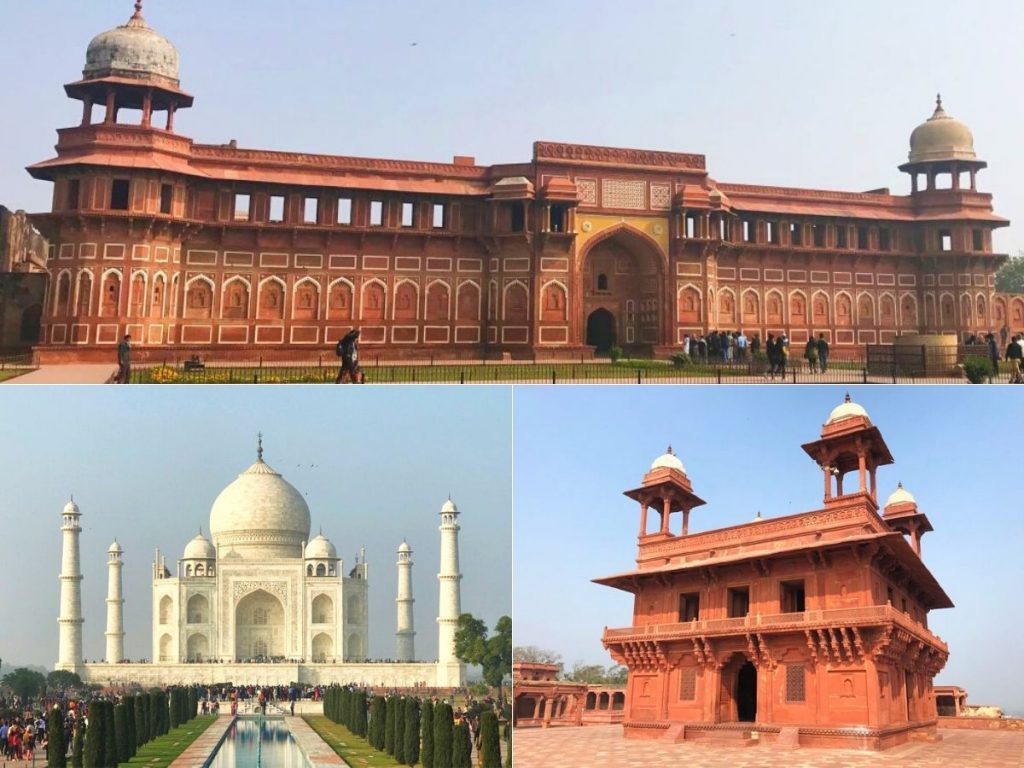
World Heritage Sites in Uttar Pradesh: the Taj Mahal
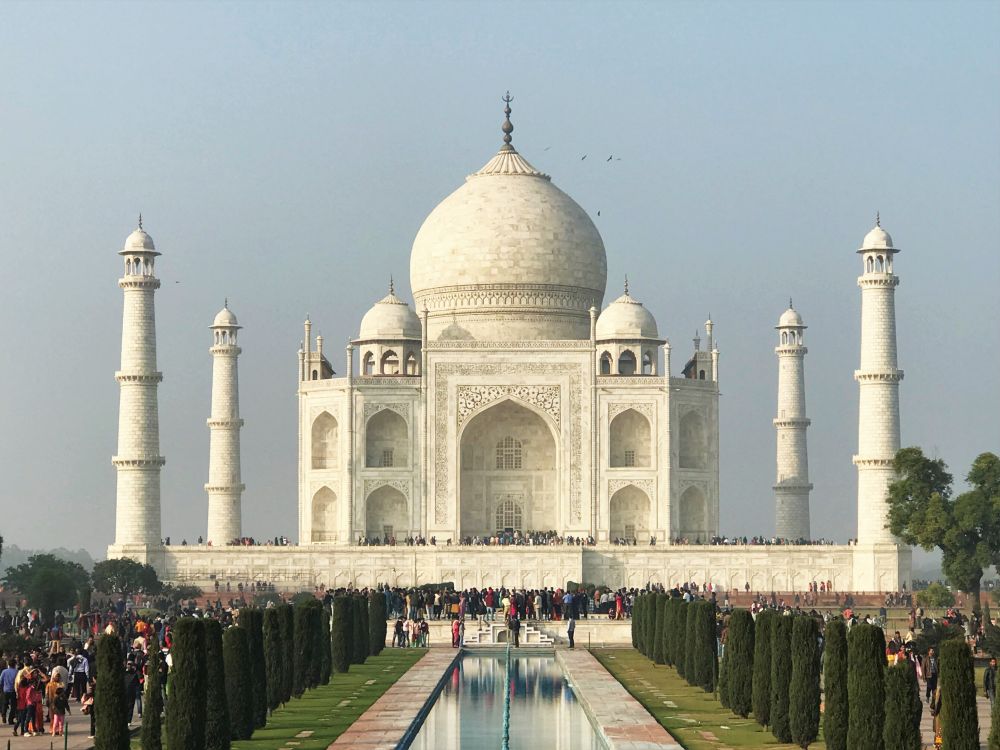
First of the World Heritage sites in Uttar Pradesh is one of the world’s most famous places, the incredible Taj Mahal. It was built between 1632 and 1653 by the Mughal emperor, Shah Jahan, as a tomb for his favourite wife, Mumtaz. Commissioned by the stricken emperor after Mumtaz died giving birth in 1631, the Taj Mahal is definitely the world’s most famous monument to love.
The Taj Mahal is constructed entirely of gleaming white marble and it’s located on the banks of the Yamuna river in the city of Agra. It’s estimated to have cost around 32 million rupees at the time, which in 2020 terms is almost a billion US dollars – a staggering sum! The Taj Mahal complex around the main tomb also includes a guesthouse, a mosque, and formal gardens.
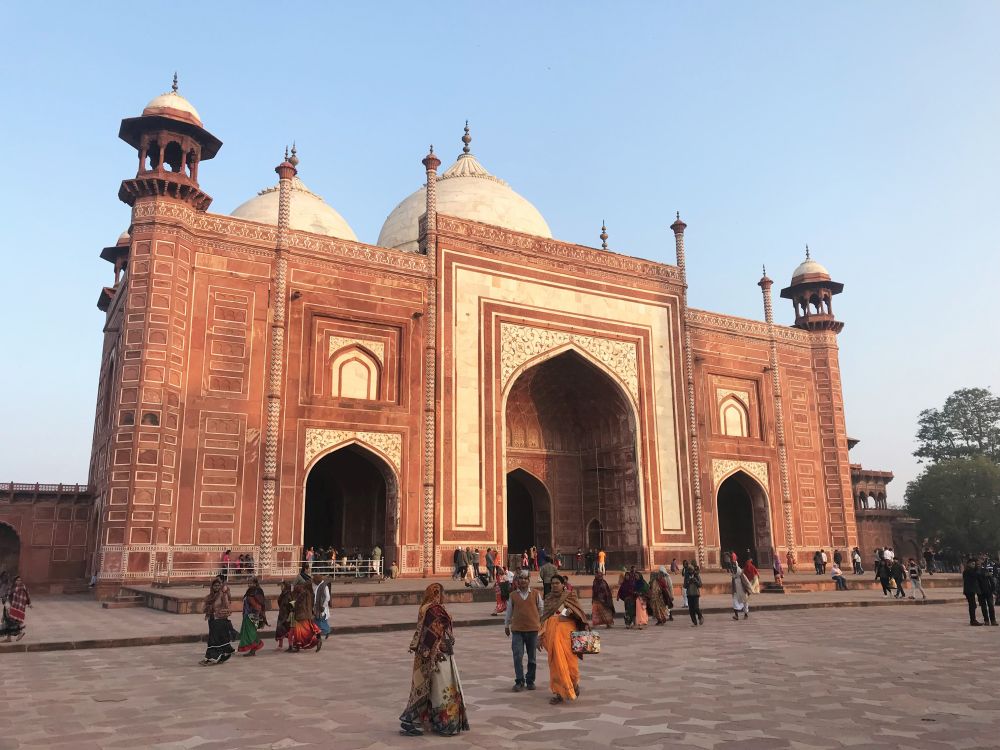
It’s absolutely a shining jewel of Islamic art, and some call it the pinnacle of Muslim art in India. Inspired by other Mughal buildings such as Humayun’s Tomb (one of the World Heritage Sites in Delhi), the Taj is intricate, precise, and beautiful.
Although looking at the Taj from a distance with its shimmering marble reflected in the pool is absolutely spectacular, the up-close view is possibly even better. Distant photographs don’t really convey how detailed and intricate every surface of the building is. Islamic script, floral patterns, semi-precious stones, geometric designs and more cover every area of the facade. The whole complex really is a thing of incredible beauty.
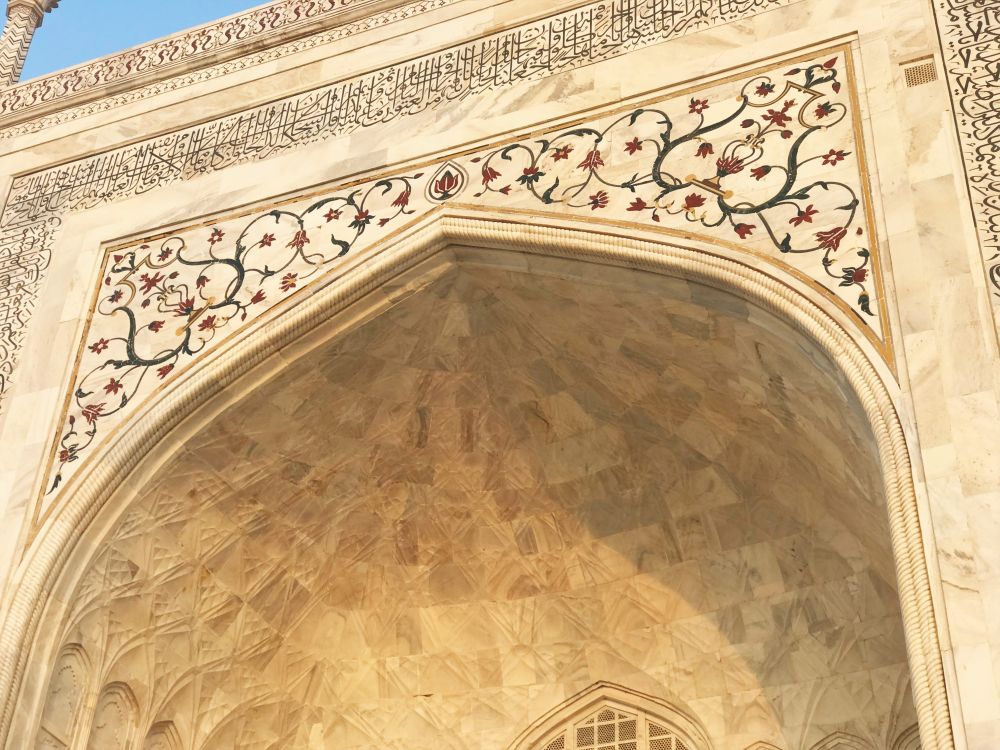
The inside is quite fascinating as well. Mumtaz’s tomb is located at the precise centre of the whole complex, surrounded with calligraphy, carvings and decorated tiling. However, the actual sarcophagus is relatively plain, in keeping with Islamic law. Shah Jahan himself is buried right next to Mumtaz. Interestingly, the location of his sarcophagus is the only non-symmetrical placement in the entire Taj Mahal complex.
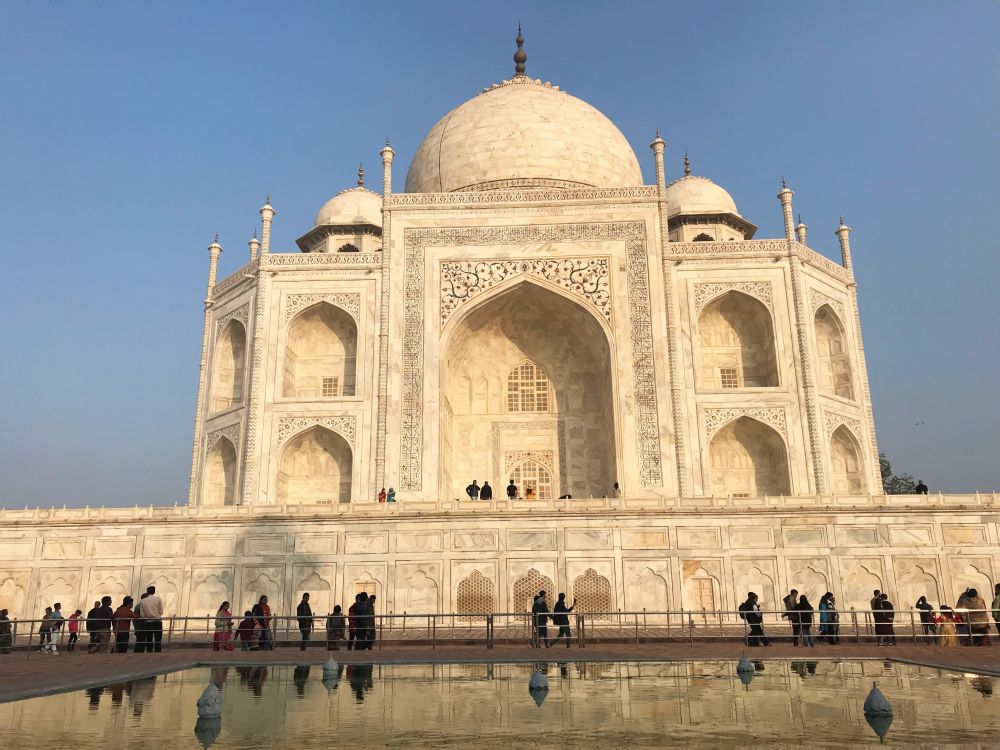
Know Before You Go
Tah Mahal is open every day except Fridays. It opens 30 minutes before sunrise and closes 30 minutes before sunset. Tickets are 50 rupees for Indians, 540 rupees for citizens of SAARC and BIMSTEC countries (essential South Asian countries), and 1100 rupees for other foreigners. Access to the mausoleum itself costs an extra 200 rupees regardless of nationality, and is strongly recommended. You can buy tickets online directly from the Archaeological Survey of India.
Note that motorised vehicles aren’t allowed near the Taj Mahal, so your visit will definitely involve plenty of walking. Be sure to wear comfortable shoes! You’ll also need plenty of water, sunscreen, and a hat.
Tip: International tourists often arrive early for the sunrise, while domestic tourists arrive during the day. If you’re not worried about catching the sunrise, aim for a mid-morning arrival when it’s quietest!
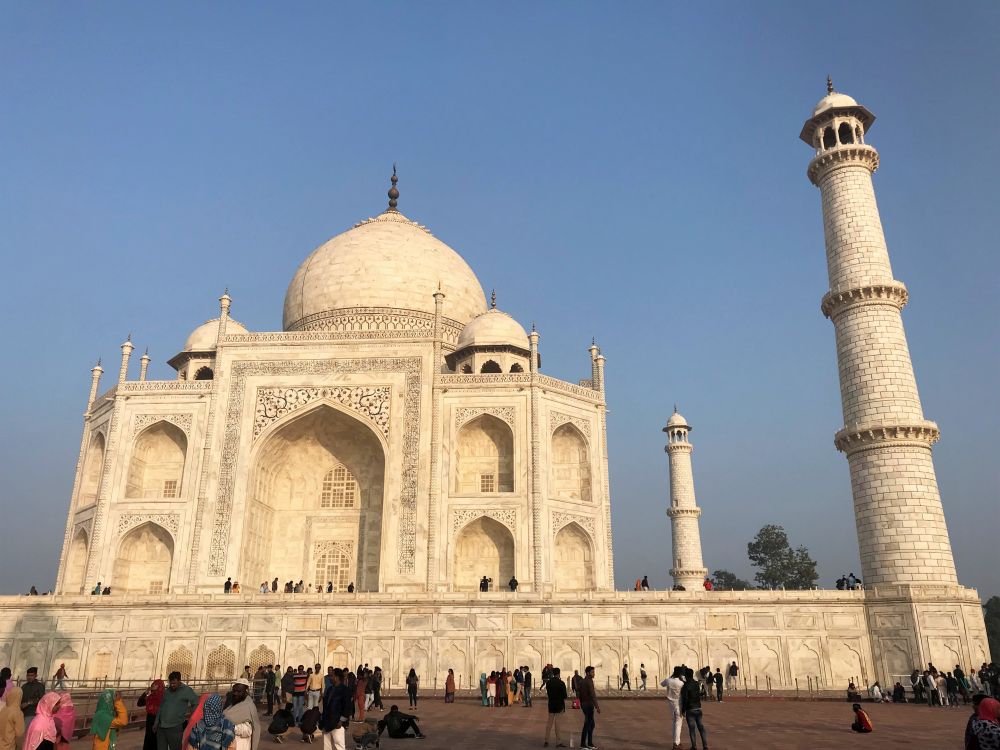
World Heritage Sites in Uttar Pradesh: Agra Fort
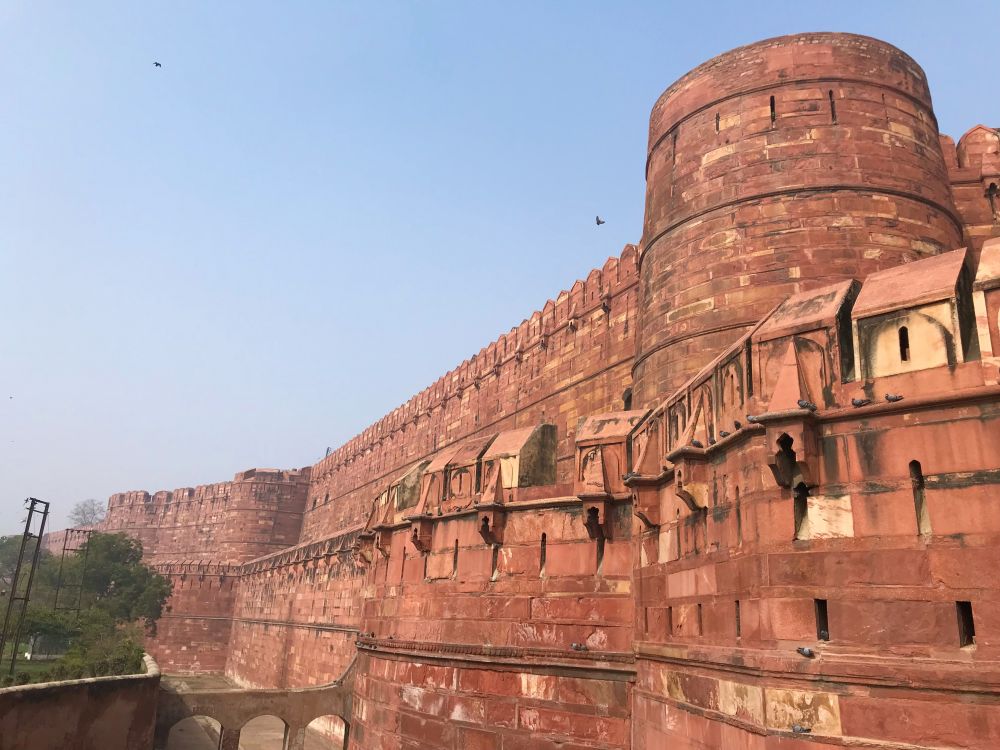
Next of the Uttar Pradesh UNESCO sites is the amazing Agra Fort. Normally you’d expect a “fort” to be a hardened military installation. But Agra Fort is really more of an imperial palace and walled city.
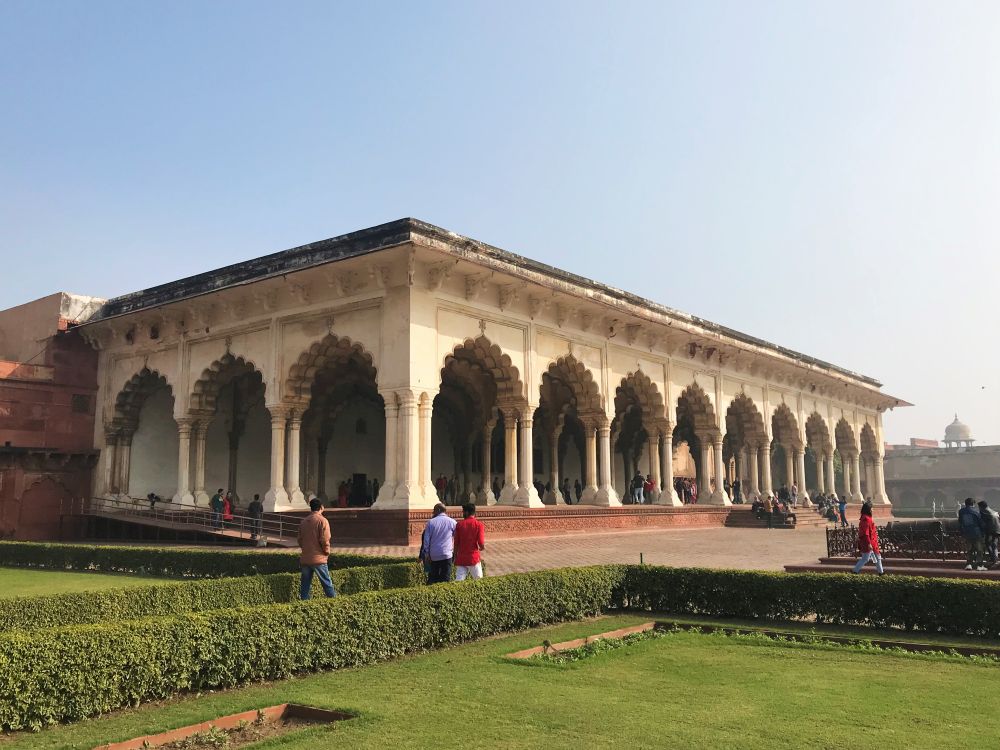
It was built for Mughal emperor Akbar the Great between 1565 and 1573, who recognised the strategic importance of the location. Akbar’s grandson Shah Jahan (builder of the Taj Mahal) applied the finishing touches and gave the Fort its current appearance. It stayed as the main residence of the Mughal emperors for the next hundred years, when the capital moved back to Delhi.
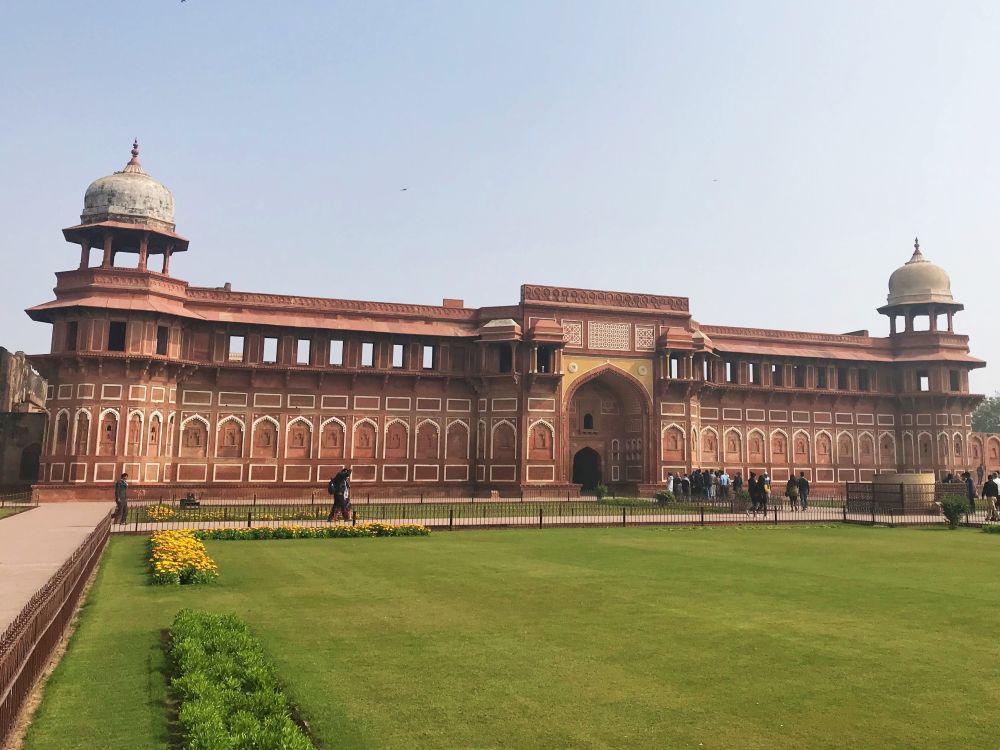
The Fort is laid out in a vague semi-circle, covering an impressive 94 acres. It’s constructed almost entirely of red sandstone, and sits just 2.5 kilometres from the Taj Mahal, which you can clearly see from the battlements. As you approach the Fort, enormous walls loom over you, joined with imposing bastions, redoubts and battlements. There’s four gates in the walls, though only one (the Lahore Gate) is still in public use.
Inside the walls, there’s plenty to see. Aside from the massive gates, there’s also various temples, audience halls, residences, palaces, and of course exquisite artwork everywhere too. Floral patterns, geometric designs, calligraphy, carving, and much more.
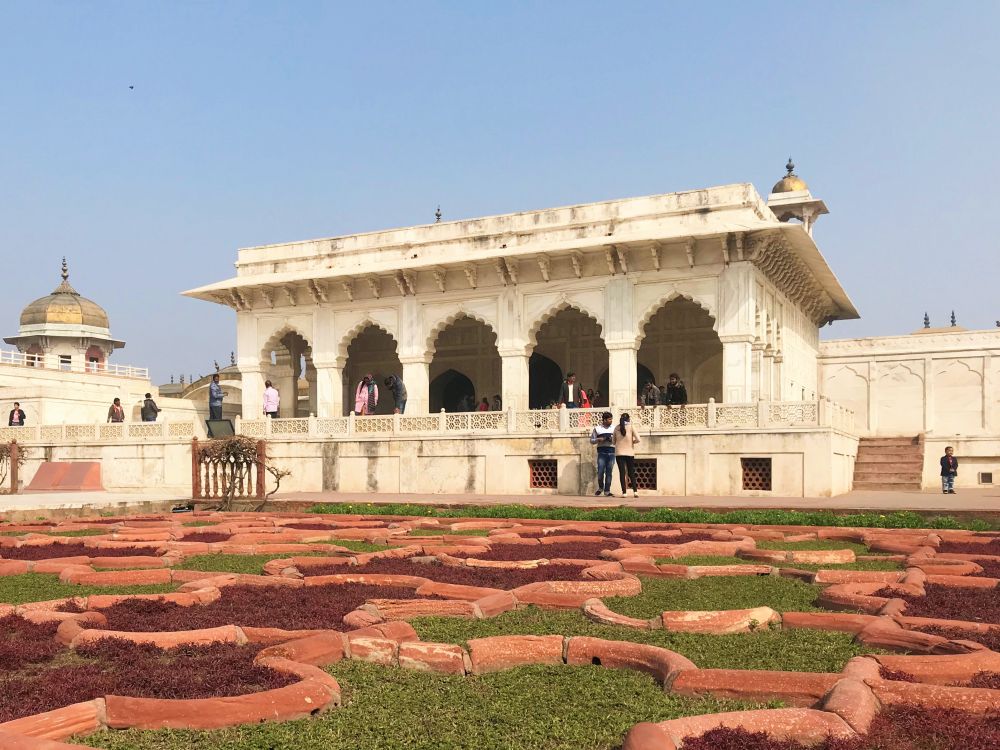
You even get some spectacular views of the nearby river, and of course, the Taj Mahal as well. Most of the architecture is done in the very distinctive Mughal style, with its clear Persian and Arabic influences.
Know Before You Go
Agra Fort is open seven days a week, sunrise to sunset. Entry fees are 50 rupees for Indians, 650 rupees ($9 US) for foreigners. Entry on Fridays is slightly cheaper, and you can pre-purchase tickets online from the Archaeological Survey of India. Guides are available on site, though be sure to choose a guide with an official ID badge.
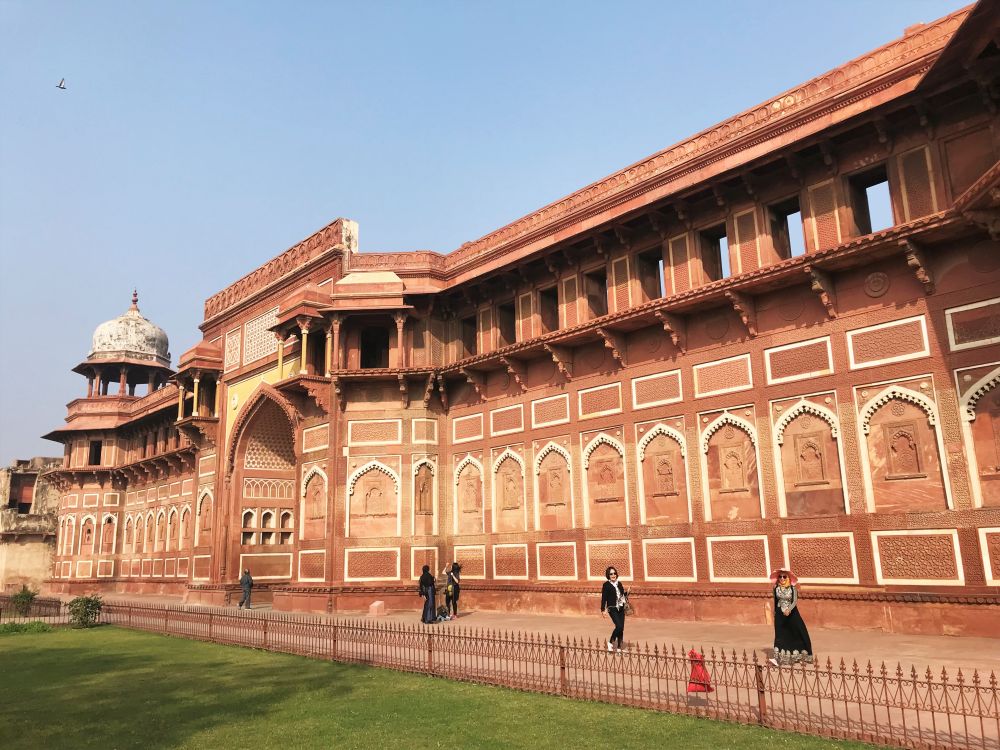
World Heritage Sites in Uttar Pradesh: Fatehpur Sikri
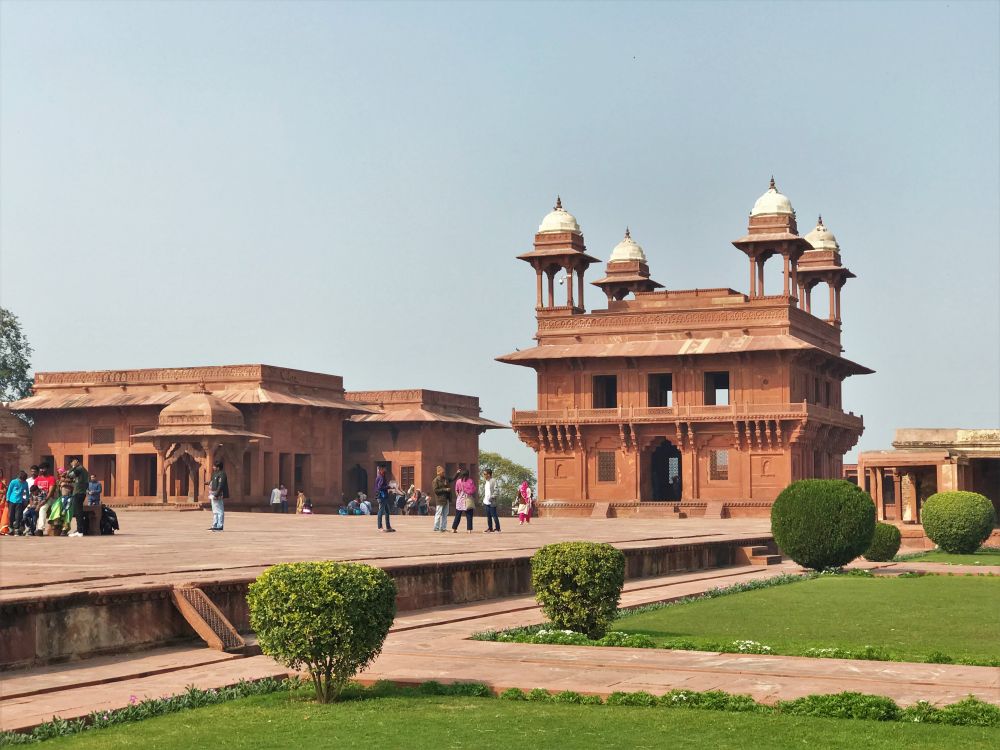
The third and final World Heritage site in UP is Fatehpur Sikri. It’s another large palace complex dating from the time of the Mughals. Fatehpur Sikri is located about thirty kilometres outside of Agra, and was founded as a capital city by the Mughal emperor Akbar the Great in 1571.
Construction lasted for several years, though in 1585 Akbar left to fight a war against Punjab and lost interest in the project. Within 25 years, the city was completely abandoned.
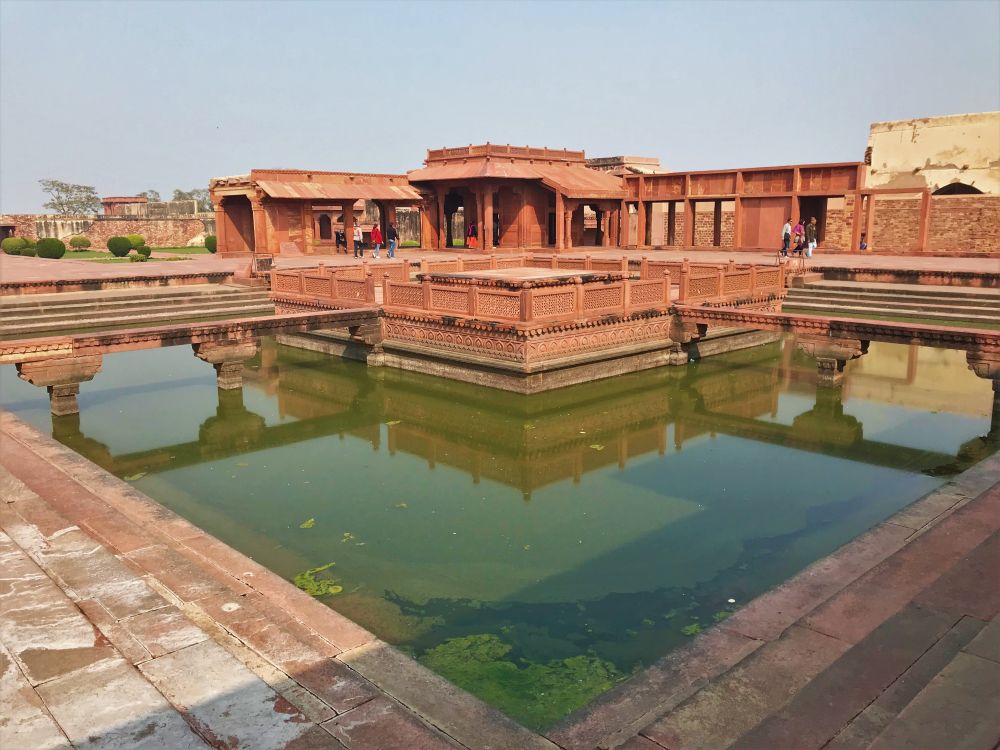
Originally planned to be an enormous and grand capital city, not much remains these days of Fatehpur Sikri, but what does remain is very striking. Built largely from red sandstone, the fortresses, harems, palaces, mosques, gardens and audience halls are all distinctive and unique.
Highlights include the Diwan-I-Am (Hall of Public Audience), the Diwan-khala-I-Khaas (Hall of Private Audience), the Treasury, and the Daulat khana-I-khas (Emperor’s Private Chamber). Interestingly, there’s clear Gujurati influences on display here, as a legacy of the Gujurati craftsmen who built it. If you’ve visited any of the World Heritage Sites in Gujarat, you’ll definitely notice the similarities!
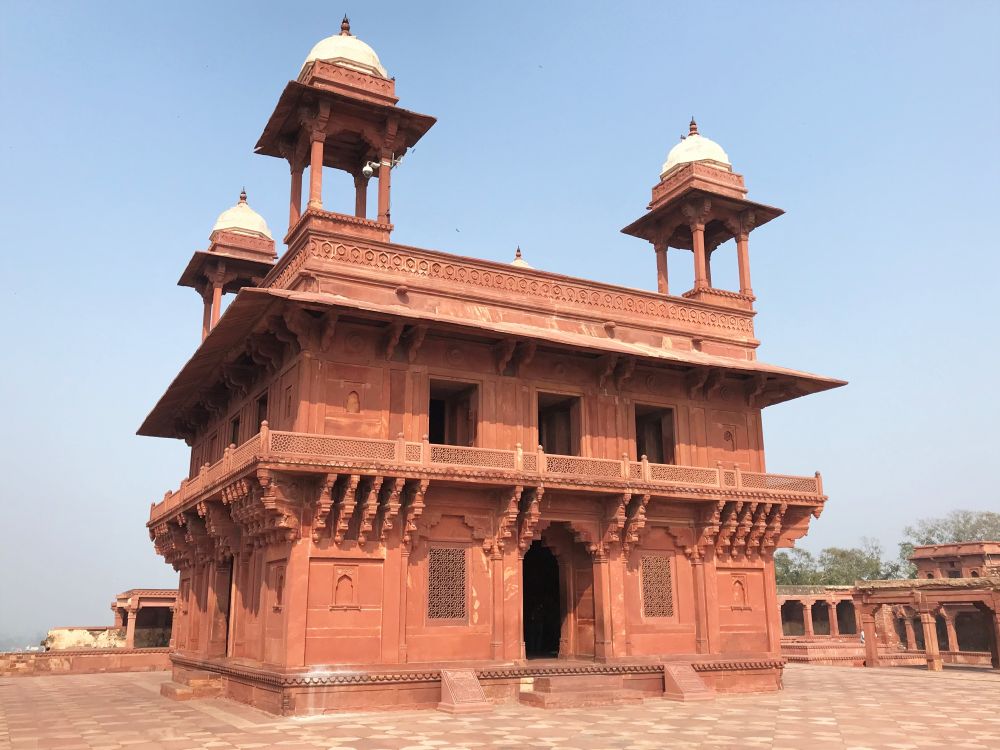
One of the most impressive areas of the complex is the enormous Jama Masjid, or congregational mosque. It’s still one of the largest mosques in India! Nearby is the Buland Darwaza (Gate of Victory), the highest gateway in the world.
Also in this mosque complex is the beautiful Tomb of Salim Chishti. It’s a striking white marble building, often considered the finest example of Mughal architecture. Salim Chishti was a Sufi saint who predicted the birth of Emperor Akbar’s son and heir, Jahangir. The stonework on this building is absolutely exquisite, and really has to be seen to be believed.
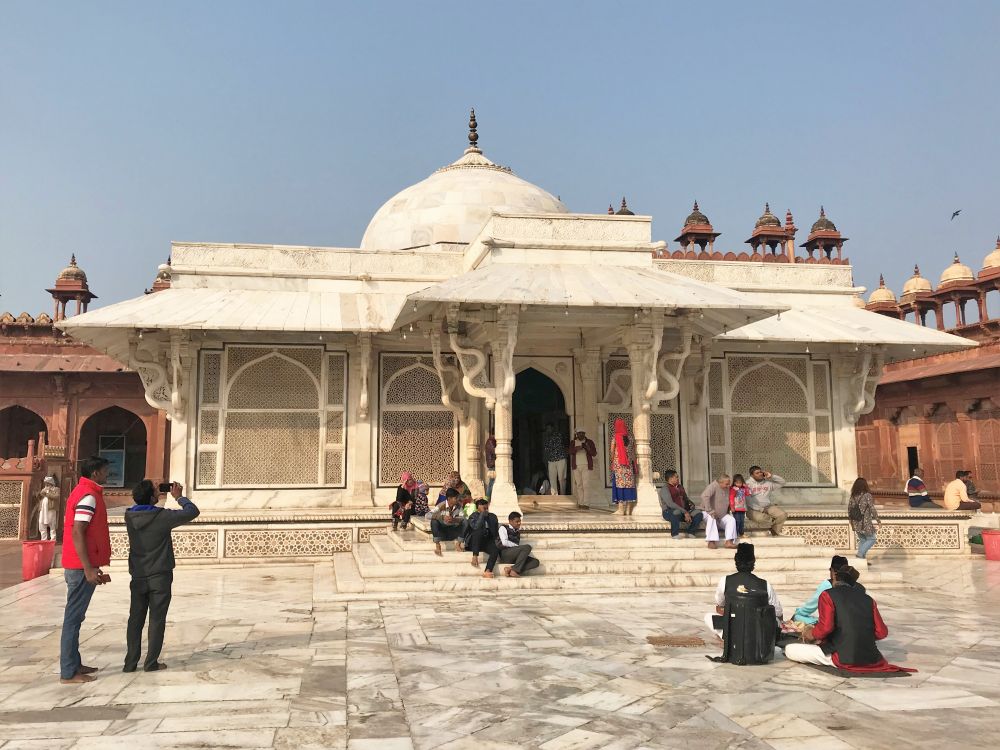
Know Before You Go
Fatehpur Sikir is located 37 kilometres south-west of Agra, about an hour’s drive depending on your driver. It’s open 7 days a week, sunrise to sunset. Tickets are 50 rupees for Indians and citizens of most South Asian countries, while for other foreigners it’s 610 rupees (about $8 USD). Pre-purchase your tickets online from the Archaeological Survey of India website, or use a tour company in Agra.
Fatehpur Sikri is a large site, so a tour guide is recommended. It’s best to stick with the official licensed guides who approach you near the ticket booth. If you do hire an unlicensed guide, be sure to negotiate a price up front.
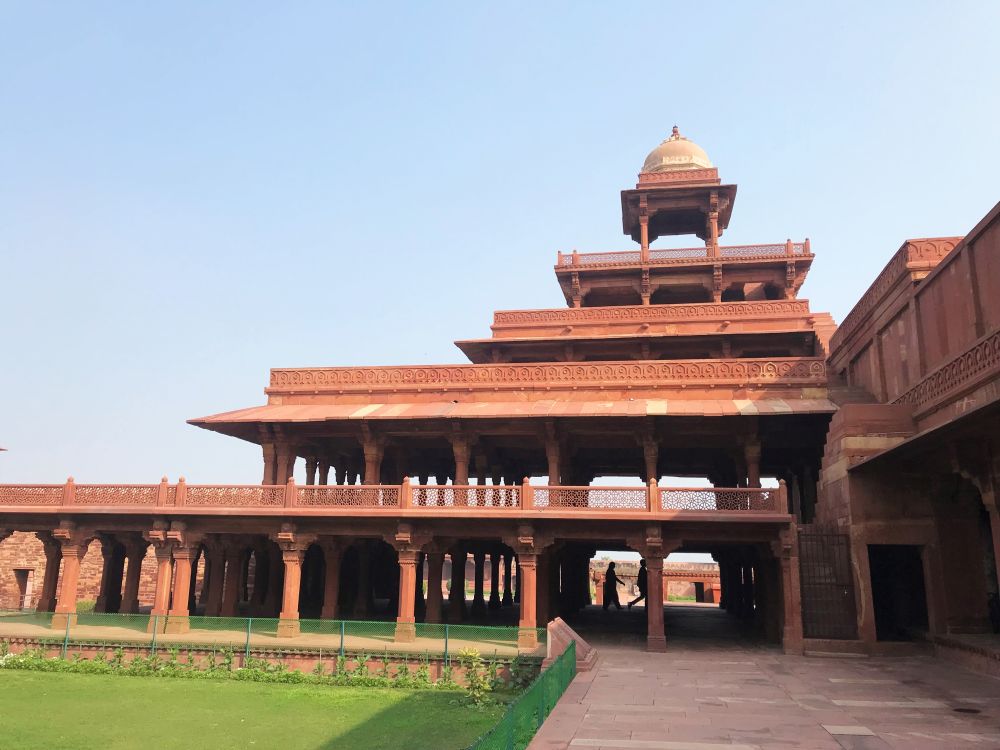
Conclusion
Overall, the three UNESCO World Heritage Sites of Uttar Pradesh are absolutely magical. Although the Taj Mahal deservedly gets all the attention, both Agra Fort and Fatehpur Sikri are absolute must visits on any journey through Uttar Pradesh.
To learn more about Indian history, consider checking out the nearby World Heritage Sites in Rajasthan, or further south there’s the World Heritage Sites in Mumbai!
